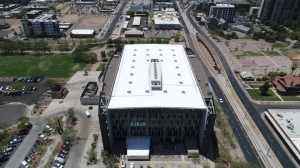
The new roof atop the Burton Barr Library features a fully adhered Sarnafil PVC membrane. Photos: Star Roofing Inc.
At 6 p.m. on Saturday, July 15, a microburst over the roof of Burton Barr Library in Phoenix, Arizona, was strong enough to lift the membrane and the pavers meant to protect the structure during such extreme weather conditions. The structure, including the roof, is designed to remain mechanically stable and adapt as the stress on the building increases, but the severe wind event ultimately led to a broken sprinkler system.
The sprinkler system was installed under the roof system on the topside of the metal deck. Water rained down from the fifth floor and spread throughout the building. Upon initial evaluation, it was believed that approximately 50 percent of the building had water damage. At one point there were several inches of standing water on the first floor.
The structure and roof deck were determined to be sound. The immediate goals included temporarily protecting the roof area from any further rain, as the weatherproof membrane had been disturbed, and drying out the moisture inside the building.
Star Roofing Emergency Services was called by Brycon Construction Company, and a crew of Star roofers spent the weekend preforming roof repairs to get the roof in the dry and mitigate further interior damage.
Installing the New Roof
Star Roofing’s estimating and operations departments worked with Brycon Construction and the city of Phoenix to put together re-roof specification and budget pricing to install a new roof.
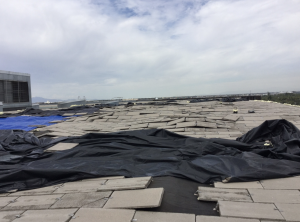
After it was damaged during a high-wind event, the existing roof system, including loose-laid membrane, insulation and interlocking pavers, was removed and recycled. Photos: Star Roofing Inc.
The existing roof system consisted of loose-laid EPDM over two layers of 4-inch polyiso insulation over a steel deck. Ballast consisted of 1 1/2-inch-thick interlocking pavers. Complete removal of the existing system was required. In all, 23 semi loads of insulation, 6 1/2 tons of membrane and 255 tons of concrete pavers were removed. Star Roofing recycled 100 percent of the pavers at Cemex USA in Phoenix, where the company grinds pavers and uses the material in making concrete. The EPDM and the roof insulation were also recycled through Nationwide Foam Recycling.
Access and the roof height provided challenges, especially in the roof removal process. The 34,000 pavers, each weighing 15 pounds, were placed in small trash bins. Pavers were removed 45 at a time, as this was the maximum weight per bin that Star’s crane could handle with the jib extended at the angle required to reach the building.
Safety is always the paramount concern, according to Jeff Klein, vice president of Star Roofing. “Challenges included exposed edges on the north and south roof deck and the removal of the ballast pavers with our crane due to the weight of the pavers themselves,” he notes. “To overcome these concerns, we limited the number of pavers removed at a time so as not to overstress the crane, and we made use of mobile fall protection carts and permanent safety tie-off davits.”
Additional work was required due to the replacement of the damaged sprinkler system. The sprinkler was installed above the roof deck and buried under the roofing system. Because of possible litigation, the sprinkler system piping had to be marked, disassembled and lowered to the ground. The system was then reassembled in the parking lot for inspection by the city of Phoenix and their consultants.
The new roof specified was a fully adhered Sarnafil PVC system. Crews from Star Roofing installed 5/8-inch DensDeck cover board, which was mechanically fastened with gray screws to match the underside of the exposed metal deck. Screws had to be kept in straight lines because of their visibility. A self-adhered vapor barrier was installed over the cover board. It was topped with one layer of 3-inch polyiso and two layers of 2 1/2-inch polyiso, all set in adhesive.
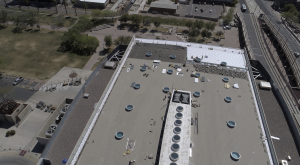
Photos: Star Roofing Inc.
A special installation method was required at the perimeter to protect against another high wind occurrence. Four layers of 5/8-inch DensDeck and two layers of 2 1/2-inch polyiso insulation, all secured with adhesive, were installed 18 feet in from of the roof edge.
The entire 43,000-square-foot roof area then received a Sarnafil 72 mil Fleeceback PVC membrane that was fully adhered. The system carries a 25-year warranty.
The project progressed smoothly, notes Klein. “That’s what we do every day — working collaboratively with many stakeholders to problem solve and design a system that meets the needs of the building, doing the job in a timely manner, and minimizing disturbance to daily business and other major construction underway.”
TEAM
General Contractor: Brycon Construction, Chandler, Arizona, www.brycon.com
Roofing Contractor: Star Roofing Inc., Phoenix, Arizona, http://starroofingaz.com
MATERIALS
Membrane: 72-mil Fleeceback PVC, Sika Sarnafil, https://usa.sarnafil.sika.com
Cover Board: DensDeck, Georgia-Pacific, www.densdeck.com

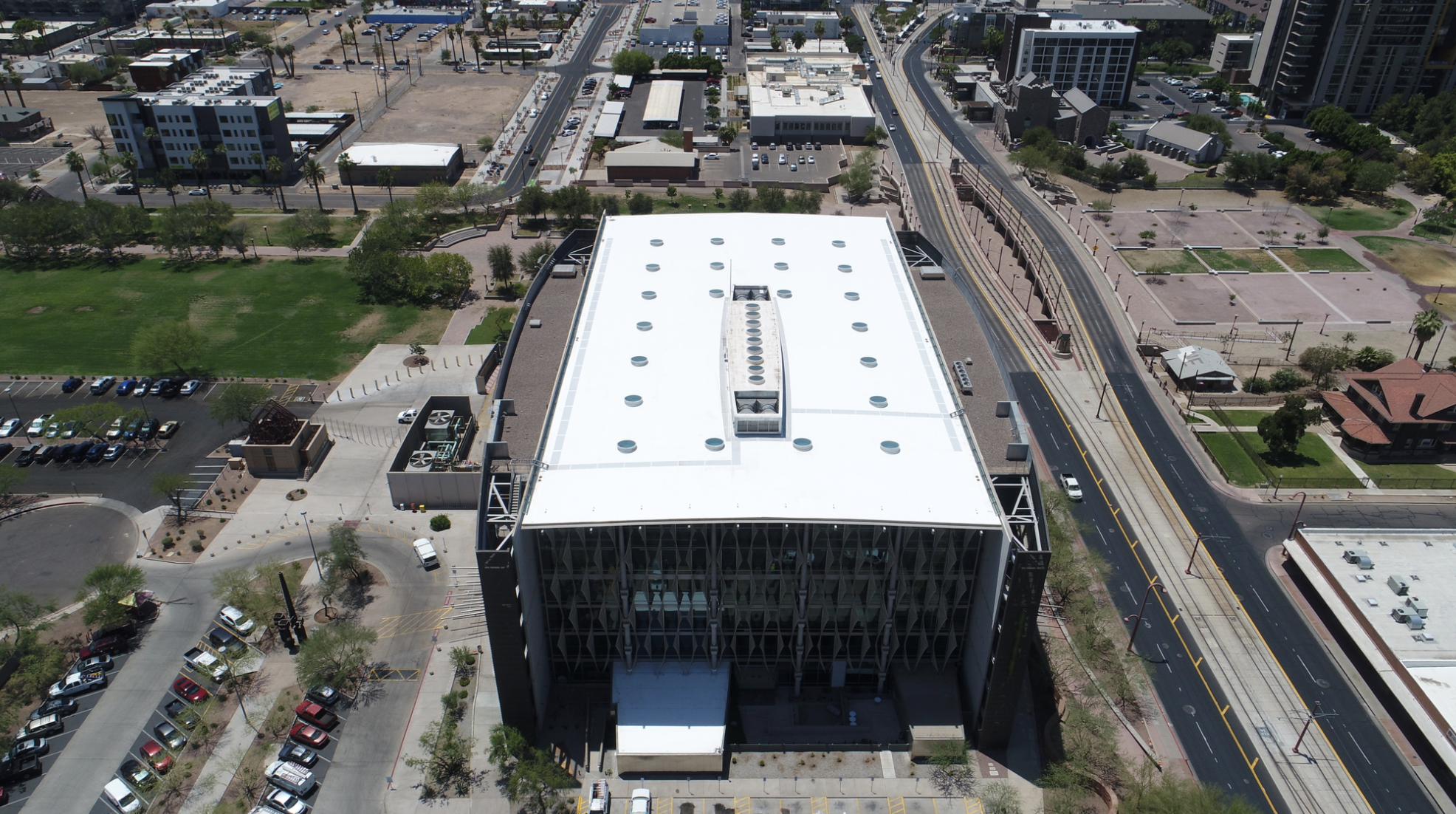

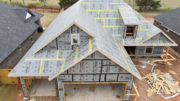


Be the first to comment on "Prompt Response to Damage and a New Roof Help Restore Phoenix Library"